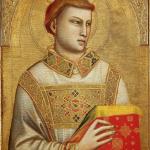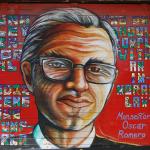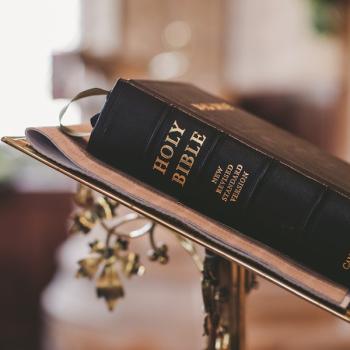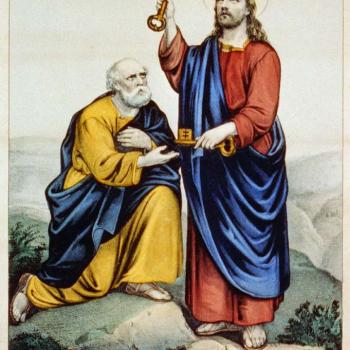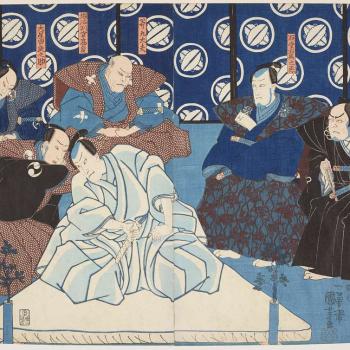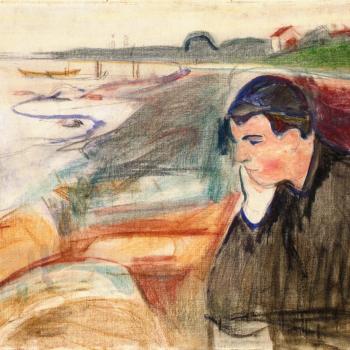In the 19th century, Japan was reopened to Western powers, most notably by Commodore Matthew Perry, an American sailor. Now, by and large, the West was more interested in trade than in religion, at least in terms of Japan. This turn of events, however, would allow priests to return to Japan, though not right away. The story of the Japanese secret Christians rediscovering the structural Church is enough to move me to tears:
“It is 12:30 p.m. in Nagasaki, on March 17, 1865. Father Bernard Petitjean, a priest of the French Societe des Missions Etrangeres, hears a noise at the back door of his little chapel. On opening he is surprised to find a group of 15 middle-aged Japanese men and women — surprised because all native- born subjects of the Mikado are strictly forbidden to associate with Christians and his chapel has been declared to be reserved only for foreigners.”
So begins Part 17 of a series titled “Great Moments in Catholic History,” published in 1983 in the journal The Catholic Register. The article’s author is Fr. Jacques Monet, who vividly captures the emotional intensity of this charged moment.
“Until now,” he continues, “[Fr. Petitjean] has had no visitors. But here, standing before him are these 15 people, looking very frightened and not a little unsure of themselves . . .
“Then a young man speaks up. His name is Peter. He is a catechist, he says timidly, and wonders whether Fr. Petitjean owes allegiance to ‘the great chief of the Kingdom of Rome.’ The missionary answers that the Vicar of Christ, Pope Pius IX, will be very happy to learn of their interest.
“Peter, however, wants to make sure he has been understood. He asks, ‘Have you no children?’ ‘You and all your brethren,’ answers the missionary, ‘Christian and others, are the children whom God has given me. Other children I cannot have. The priest must, like the first apostles of Japan, remain all his life unmarried.’ At this, Peter and his friends bend their heads down to the ground and cry out: ‘He is celibate! Thank God.’ Then they mention their village [Urakami, north of Nagasaki]: ‘At home, everybody is the same as we are. They have the same hearts as we.’ ”
“Peter” and his friends were the first evidence of an astonishing historical fact. More than 200 years earlier, Japan’s thriving Christianity had been outlawed, its adherents tortured and slaughtered by the tens of thousands. So determined was the new Tokugawa Shogunate to protect its subjects from the “evil doctrine” that, having bloodily suppressed a Christian and peasant uprising at Shimabara in 1638, it built a virtual wall around the entire country. (The Japan Times)
Another version of events goes fairly similarly, though with an emphasis on the Theotokos:
Following the opening of Japan in the mid-19th century, a Catholic church was erected in Nagasaki, the first to be built there since before the ban on Christianity. This ban remained strictly in force, and permission for the church was granted on the understanding that it was solely for use by foreigners residing within Nagasaki’s newly established foreign settlement.
Among the secret Christians, there was silent elation. By that point, they had been underground for over two hundred years. On March 17, 1865, a small group of them gathered courage and approached the church. Here they met a French priest named Father Petitjean. Kneeling before him, one whispered: “All of us have the same heart as you.” They then asked the stunned priest “Where is the statue of Santa Maria?”
This moving episode became known as the “Discovery of Christians,” and today the same statue of the Virgin Mary that Father Petitjean showed them can still be seen inside the church. In the wake of this event, thousands more secret Christians from across the Nagasaki region also came forward and confessed their faith. (The Japan Times)
Unfortunately, Fr. Petitjean’s discovery would come at the price of more blood: 3,400 Christians would be arrested, some tortured, and 36 killed before full toleration in 1889.
Now Japanese Catholics make up under 1% of the country’s population, and a few remaining Kakure Kirishitan hold on to their syncretic beliefs on far-flung islands off the western coast. This is the yield of centuries of persecution, the remainder after generational torture and terror at the hands of a developing autocracy.
It is they we ought to remember, these martyrs and confessors along with their descendants who remind us of the cycle of life and death, of the glorious resurrection in spirit if not in bald number. How easy it is to look upon the Kakure Kirishitan as a strange aberration, a syncretic holdover. How easy it is to forget what thousands endured for a faith most of us hold within like whited sepulchers.
Orate pro nobis.


